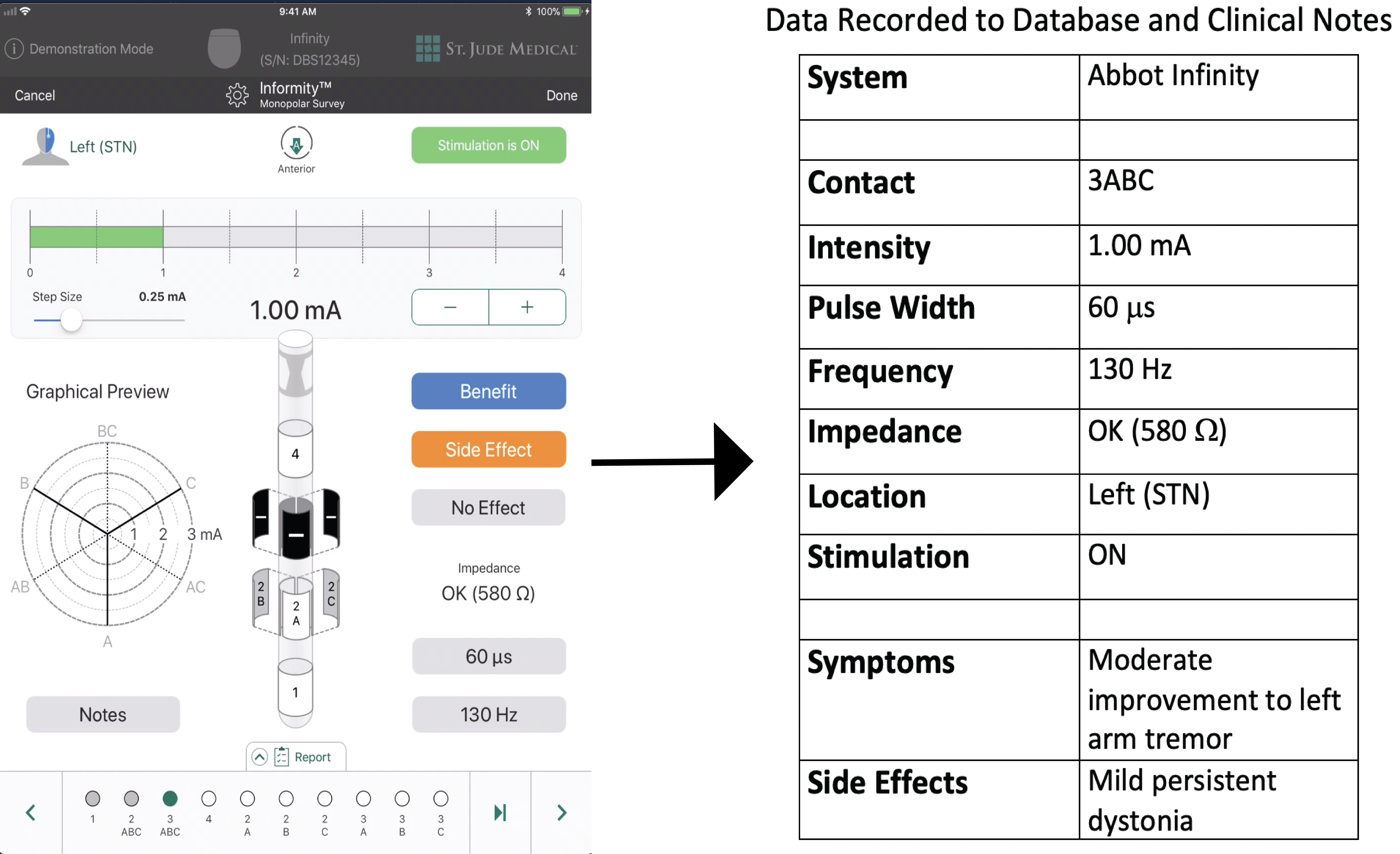Category: Technology
Objective: To automate capture of deep brain stimulation (DBS) settings and clinical outcomes during programming for movement disorders.
Background: DBS programming involves testing a wide range of possible stimulation settings to determine the therapeutic window and provide the best clinical response. During this process there is often a direct correlation between stimulation settings and outcomes. Some of this information must be recorded in the electronic health record (EHR), and virtually all of this information is valuable for DBS research. However, systematically capturing this information is a difficult and tedious process for several reasons: proprietary DBS programming interfaces from different device companies; different features and capabilities in each DBS system; manual recording is required to capture outcome data; limited, manual export tools in each DBS programmer.
Method: We have developed a system to automatically capture DBS settings and clinical responses from clinician DBS programmers. Our original prototype works with the Abbott Infinity programmer, and we will soon expand to other DBS programming platforms including Medtronic and Boston Scientific. This is achieved using an external tool that continuously monitors the programmer screen and captures changes in the user interface. In parallel, the audio recording is parsed to capture observations that are spoken aloud. Processing of audio and video data is performed using MATLAB (MathWorks Inc, Natick, MA, USA). Processed data is captured in a Neo4j database (https://neo4j.com/) in the International Neuromodulation Registry (https://neuromodulationregistry.org/).
Results: This system is able to automatically capture DBS settings and outcomes from the programmer, structure the data and store it in a database (Figure 1). Reports can be generated for the EHR, and data from different patients with DBS systems from different manufacturers can be harmonized to facilitate population health research. Changes to a programmer from a one hour programming session could be a processed in 72 seconds. Performance metrics for dictation are not yet available.
Conclusion: An automated system of data capture is likely to be more effective in efficiently capturing DBS data than systems embedded in programming systems. This system could dramatically improve data capture during DBS programming sessions, reduce the burden of re-entering data into the EHR, and facilitate DBS research.
To cite this abstract in AMA style:
K. Castell, C. Butson. Automated Capture of Deep Brain Stimulation Settings & Clinical Outcomes [abstract]. Mov Disord. 2020; 35 (suppl 1). https://www.mdsabstracts.org/abstract/automated-capture-of-deep-brain-stimulation-settings-clinical-outcomes/. Accessed December 5, 2025.« Back to MDS Virtual Congress 2020
MDS Abstracts - https://www.mdsabstracts.org/abstract/automated-capture-of-deep-brain-stimulation-settings-clinical-outcomes/

